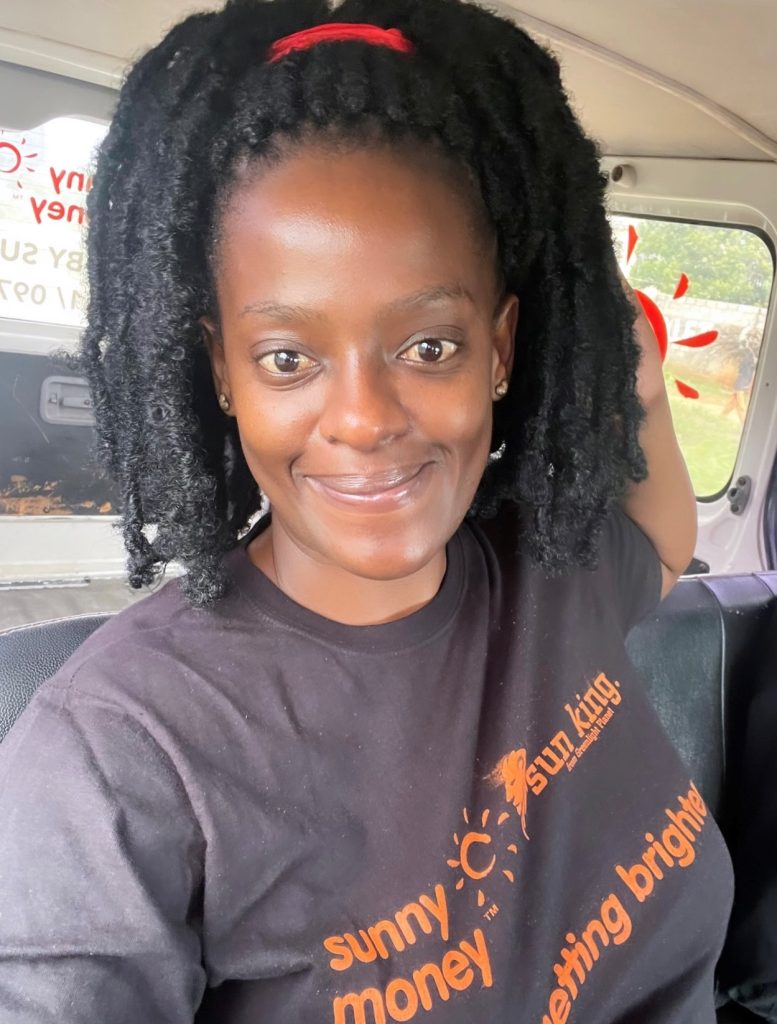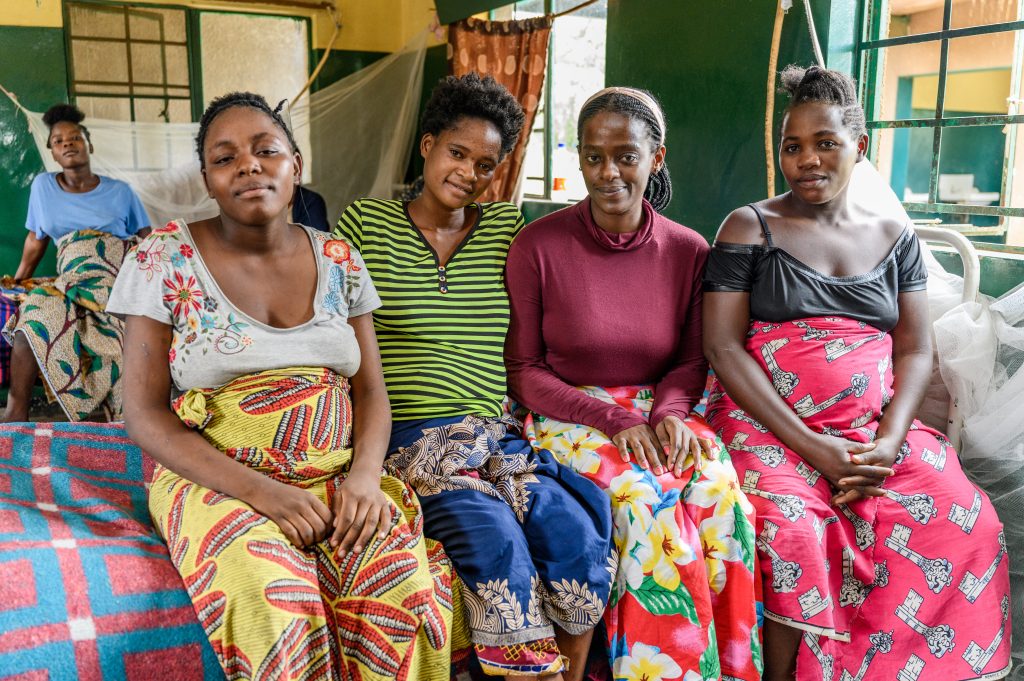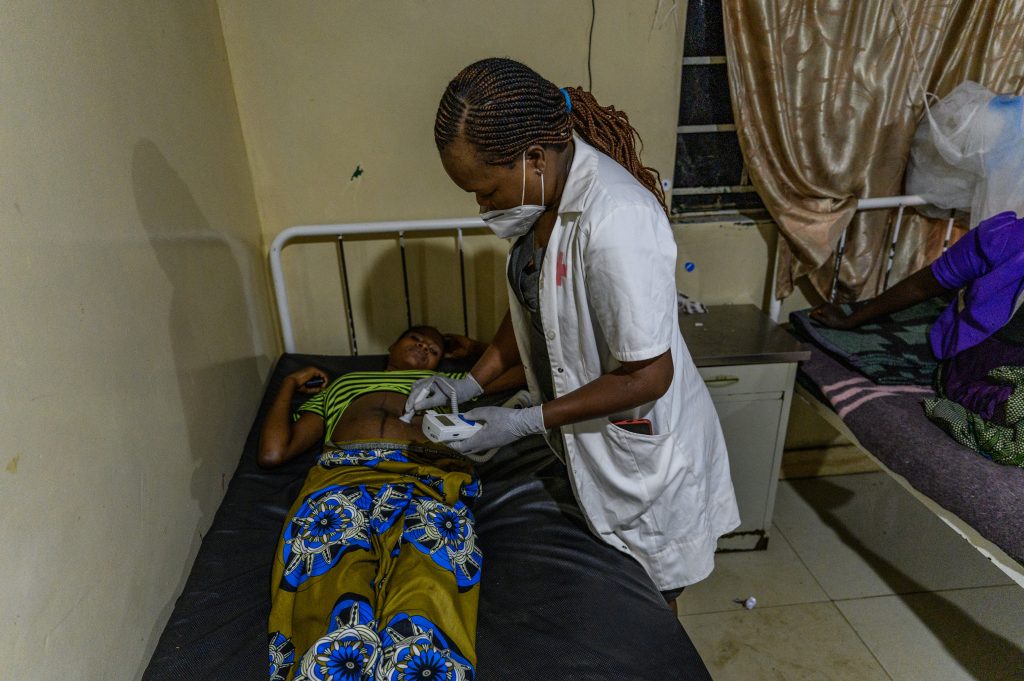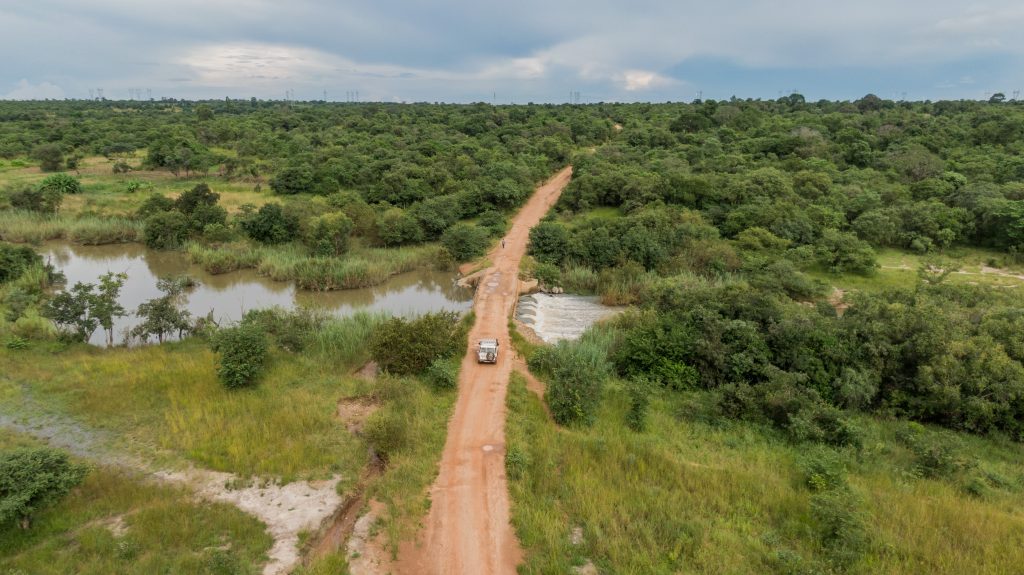“We talk so much about the delivery process – because it’s very important, and maternal deaths. But the impact of a new mother, with her new baby, who just wants to adjust…all that she wants to do is to be able to even just look at her child. To be able to breastfeed properly. But you can’t see, you have no power.”
In sub-Saharan Africa, where 200,000 women die of complications during childbirth each year, 75% of health clinics lack access to reliable electricity leaving millions of pregnant women vulnerable. In late 2020, SolarAid launched a Powering Healthcare pilot in Zambia, aiming to bring solar light and solar powered handheld medical equipment to rural clinics without access to reliable electricity.
What is it like to travel to rural clinics in Zambia to meet with patients and healthcare workers who are facing these challenges on a daily basis? Tokozile Ngwenya worked as a Monitoring and Evaluation consultant on the pilot, tracking the implementation and the progress of the programme. She explains why this work is vital to ensure that people are able to access modern healthcare, and why the implications on women in labour are life changing.

Tokozile Ngwenya, Monitoring and Evaluation consultant, SunnyMoney Zambia.
“Rural clinics have always been dear to my heart. These women that we spoke to were maybe on their third or fourth child. They had never heard the child’s heartbeat through a foetal doppler before, they had never even known what their oxygen levels were.”
In the rural areas of Zambia, where all of the ten clinics included in the pilot are located, people go to bed early. When the sun sets, there is not much else to do. The lack of access to safe lighting means there might be the occasional snake bite, or burn wound from the use of unsafe lighting sources visiting the rural clinics. But the little movement means the majority of patients who come in throughout the night are mothers to be. Women walk many kilometres to reach the clinic, “How is a patient even walking from their home to the health facility in the dark?” says Tokozile while explaining why all ten facilities chose the maternity ward for the installation of the solar light.
“The one consistent emergency is going to be a delivery. Because it’s in the rural areas you don’t really have car accidents. People are rarely active at night. It’s dark, and people rise early because they need to go to the fields. So what draws the most traffic at night in most rural facilities, is deliveries. That’s why every facility that we lit up said the top wards to prioritise are maternity and delivery.”
Included in the healthcare pilot was not only solar lighting, but each clinic also received handheld medical equipment such as a solar powered foetal doppler, an infrared thermometer, a blood pressure cuff and a pulse oximeter.
“Seeing them being able to have this modern technology was very important to me. In terms of solar lighting, what really touched me was when I spoke to the staff and some of the mothers. A mother who said, ‘the practitioner has left me in the room’, because it’s the night shift, I’m waiting maybe 3-4 days to be discharged. I’m no longer afraid to be in the dark with my new born baby.’ That was a take-home for me, because I had never thought of that.”

Tokozile Ngwenya visiting the maternity ward at Chipembi Mission Clinic, Zambia. Photo: SolarAid/Jason J Mulikita.
Access to solar powered medical equipment does not only help during the birth and after the birth. It helps keep the mum and baby healthy throughout the whole process. Simple procedures such as pre-birth check-ups are helped with the use of the foetal doppler and the pulse oximeter and gives the mothers to be a sense of relief.
“At the end of the day, every woman that has ever been pregnant, has the fear, of either a miscarriage, or having a child with complications. Because you are carrying something you can’t see. It’s going to cross your mind during those nine months at one point in time. But giving her that ease, when hearing the child’s heartbeat, that ‘My baby is alive, and the heartbeat is healthy.’ That makes me happy.”
The lack of light also brings real dangers to the delivery process. Without sufficient lighting, healthcare staff struggle to identify and treat haemorrhaging, which is the leading cause of the hundreds of thousands of deaths that occur every year from pregnancy and childbirth related complications.
“Looking at the impact of the staff saying that they are better able to perform and skills of sutury. It’s better, because you have the lighting and there is no complication. They were also able to detect faster, foetal distress and react promptly to conditions that save the mothers life. Because they didn’t have the foetal doppler before, so they didn’t know that the foetal heart rate was in distress.”

Nurse Esther Sakala is using the solar powered foetal doppler on patient Olivia Chifita at Chipembi Mission Clinic. Photo: SolarAid/Jason J Mulikita.
Tokozile, who has worked within the healthcare sector before, explains why interventions reaching the most vulnerable and furthest away is so crucial.
“Everybody wants to do these big projects of hydro solar, and big solar plants. But what about the people for whom one solar light makes a difference in their home? People want to do big, because they want to report big. But working on this project has taught me that we can still find the space within the vulnerable and still have enough impact. Less is more.”
However, travelling to the places furthest away in a vast country like Zambia takes a toll. Tokozile says, “The distances are so far. There is a facility we work with, Mambwe Mission Rural Health Centre, it’s located in the North part of Zambia, on the border to Tanzania. It’s 1060km to travel. So this is very far away. It takes us one and a half days to get to that facility. You can imagine what the distance does to the driver, to the team members, the roads are very bad. We need the 4×4, we need the high cars. And we have to start very early, as early as 6am. And we arrive at the nearest town around 6-7pm but sometimes as late as 10pm. Only to sleep, wake up and then start to travel again.”

Tokozile Ngwenya and the SunnyMoney team travelling to St. Paul’s Rural Mission in Zambia. Photo: SolarAid/Jason J Mulikita
“If we hadn’t picked that facility, it would never have been supported. Because everyone wants to work nearby so… as much as the distances are very difficult, if we don’t do that – who’s going to do that? The distances and the road – it really takes a toll on you. But there is a lot of gratification in doing it, they are so grateful because they have very few people visiting there.”
Even though travelling to rural clinics far away takes a toll, Tokozile speaks about her experiences and meetings with people with a spark in her eyes, “I actually joined SunnyMoney to have renewable energy experience. And when I was told the project was for renewable energy in clinics, I was very excited. I did it in the beginning, as a regular job. But then I fell in love again. The stars aligned.”
Simple, cost effective inventions such as solar powered light and medical equipment saves lives. Together, we can light up clinics, ensuring that no mother has to give birth in the dark.
